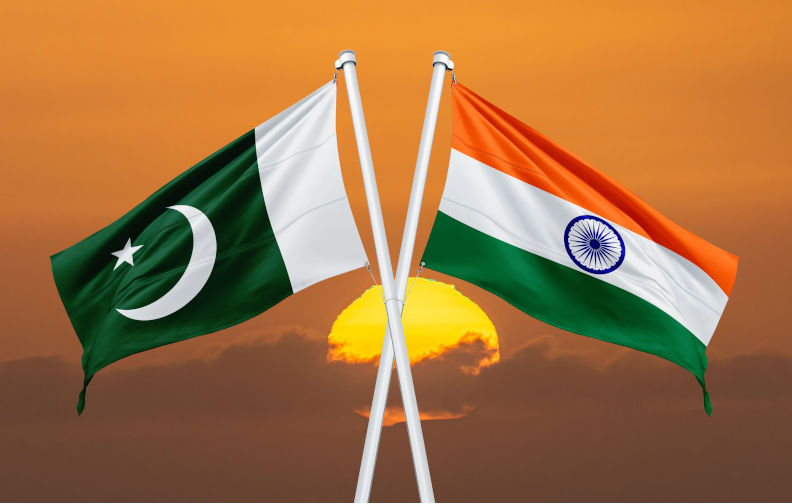India–Pakistan conflict tests the limits of nuclear deterrence
May 30, 2025
The May 2025 India–Pakistan conflict marked a significant escalation of longstanding tensions that challenges the stability of deterrence between the two nuclear armed adversaries.
While there have been regular skirmishes since their 1998 nuclear tests, these have largely been contained to the disputed territory of Kashmir.
By contrast, this conflict saw missiles and drones fired at military facilities in each other’s heartland for the first time since the third Indo–Pakistani war of 1971.
The Kashmir dispute is not just about territory. It is deeply ideological, entwined with the conflicting founding myths of the two states. Yet, even understanding the conflict as ideological does not sufficiently explain why nuclear weapons are not having a more sobering effect on policymakers. During the Cold War, the United States and the Soviet Union had an ideological conflict that was just as deeply rooted. But they were able to stabilise their competition after the hair-raising 1961 Berlin Crisis and the 1962 Cuban Missile Crisis.
India and Pakistan should have agreed to freeze the military brinksmanship and continue their competition through less lethal means after the 1999 Kargil War, but hostilities have continued to ebb and flow. Exchanges of gunfire or artillery shells along the Line of Control are common. Crises are brought on every few years by apparent Pakistani support for militancy or terrorism on Indian soil.
A partial explanation is that Pakistan is not a unified actor. Its military is not entirely beholden to the democratic leadership. The jihadist groups are not under complete military control, and at least some portion of the violence in Kashmir has been homegrown. The murkiness of Pakistan’s institutional interconnections makes state control difficult and deniability easy.
In some ways, India and Pakistan did reach a stable arrangement – but at the high cost of continued violence. Crisis management under nuclear deterrence is like a game of “chicken”. Each side tries to escalate in a way that leaves the other two options – back down or cross over some tacitly understood threshold that could lead to the conflict spiralling out of control.
In the Cold War, that tacit threshold was a direct US-Soviet military engagement. India and Pakistan’s tacit threshold was containing official military responses — though not necessarily terrorist attacks — to the area of Kashmir.
But there has been a gradual erosion of this threshold over the last few years. During the Kargil conflict, Indian responses were contained to Indian-administered Kashmir. In 2016, India launched missiles on suspected militant strongholds in Pakistan-administered Kashmir. In 2019, India launched them on a site in Balakot, just inside Pakistan proper. In 2025, under Operation Sindoor, India attacked sites in the Pakistani heartland of Punjab and Pakistan retaliated with strikes on multiple locations in India
As heinous as the April 2025 Pahalgam attack in Indian-administered Kashmir was, it was not the worst terrorist attack India has suffered from Pakistan-based jihadist groups. The November 2008 Mumbai attacks far outstripped it in terms of lives lost. India’s missile attacks directly into Pakistan’s Punjab province were a clear escalation.
India’s escalation beyond the apparent threshold has been incredibly risky. India has been focused for months on leveraging Trump’s tariffs on China to its benefit. The Indian stock market was rising rapidly. New Delhi has everything to lose from a major war. While a significant response to the Pahalgam attack was required, India’s decision to suspend the Indus Waters Treaty — which threatened Pakistan’s entire water supply — already met this aim. Missile attacks on terrorist infrastructure in Pakistan-administered Kashmir would have delivered the intended message. What was the need to broaden the scope to Pakistan proper?
Some explanation is provided by the nature of the Modi Government and the ruling Bharatiya Janata Party. While the Kashmir dispute is a salient issue for most Indians, the BJP is even more intensely focused on it, making a priority of abrogating Kashmir’s special status and even reducing it to a union territory.
BJP governments — and Indian Prime Minister Narendra Modi’s administration in particular — have been willing to take high-risk decisions to break longstanding stalemates. Modi came into office in 2014 vowing to be tougher on Pakistan for future cross-border terrorist attacks. Given the failure of the 2016 and 2019 airstrikes to deter further attacks, further escalation seemed logical.
The diplomatic de-escalation following the conflict has taken the immediate risk of all-out war off the table. But the fundamentals have not changed. Pakistan’s retaliatory measures, and the drone battle that followed, should make clear to India that there is no easy military solution. Yet the intensification of Indian counterterrorism operations should clarify that Islamabad’s toleration of jihadist organisations on its soil risks a nuclear confrontation.
The crisis may motivate both countries to adopt a more stable detente. Yet respective nationalist elements will likely make it difficult to act on the lessons from the conflict. Claims by both Pakistani and Indian newspapers to have “won” the encounter will only fuel this tendency. Unfortunately, the most likely outcome is a return to the former status quo – perpetual brinkmanship.
Republished from East Asia Forum, 27 May 2025
The views expressed in this article may or may not reflect those of Pearls and Irritations.
